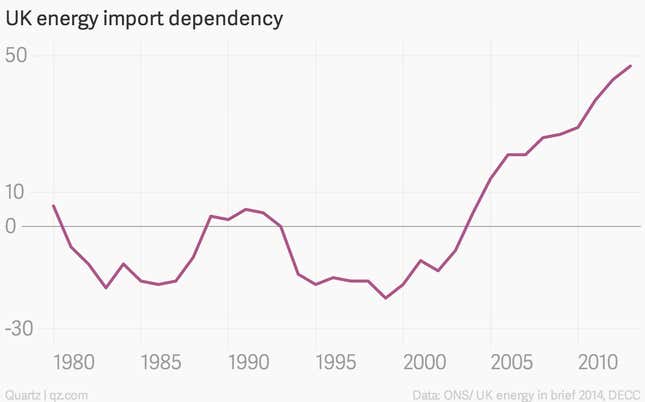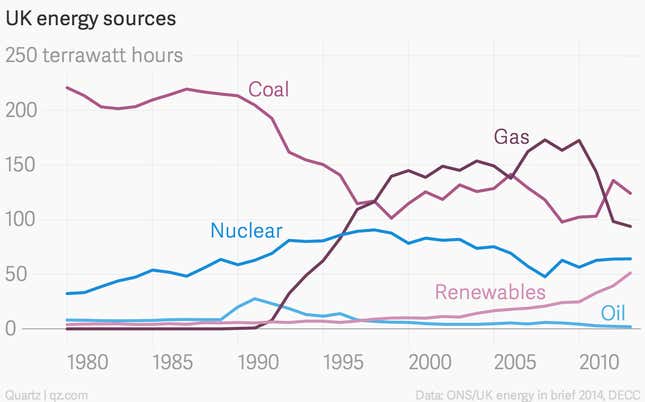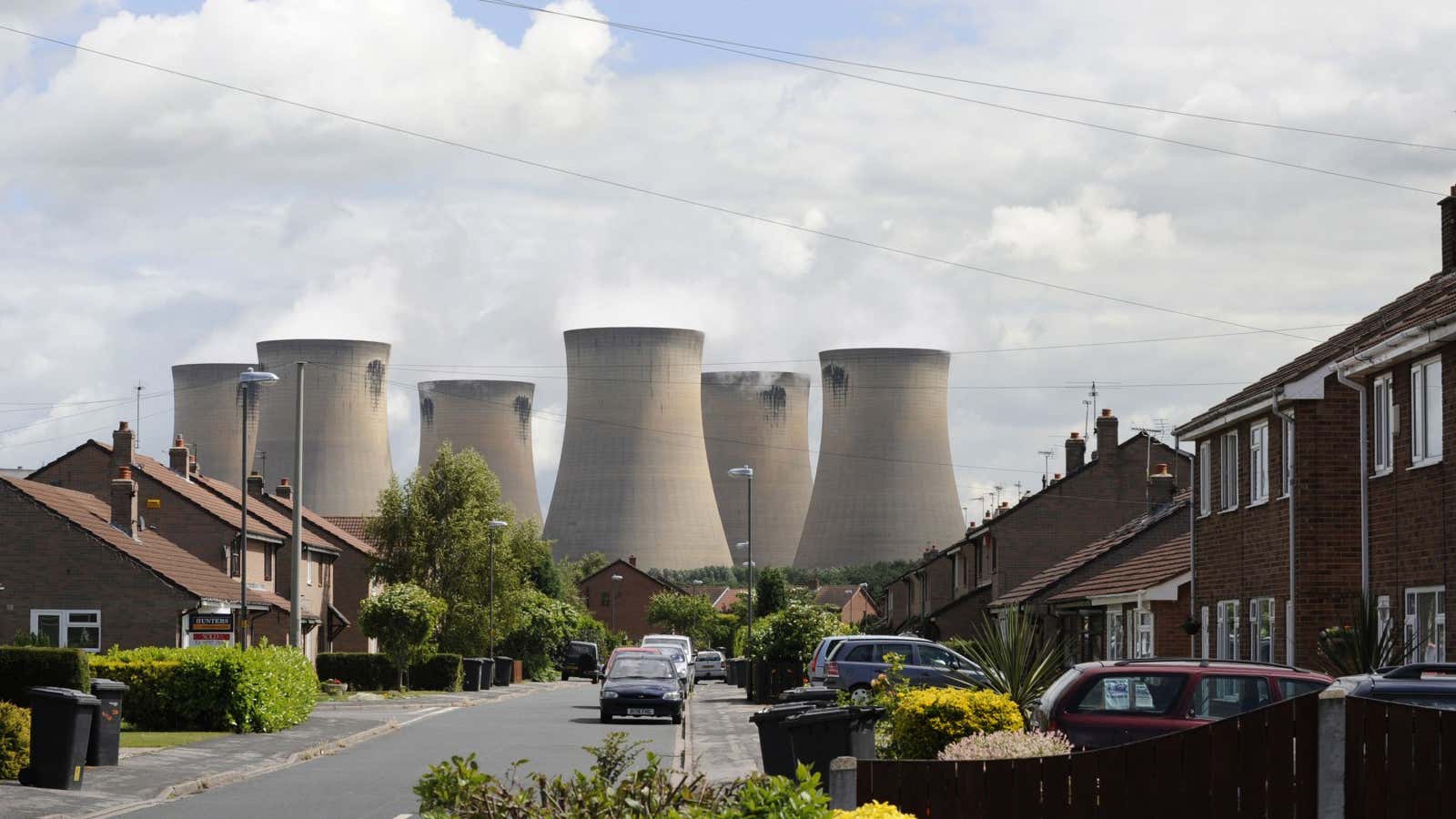Energy security–or the ability to meet energy needs without reliance on imports–now has high billing on the UK political agenda. And no wonder: the island nation shipped in 47% of the energy it used in 2013, more than ever before.

The UK is also an exporter of fossil fuels; but reserves are running out and becoming more expensive to extract. The rise in the “dependency level,” as the Office for National Statistics calls it, is due to a decline in domestic oil and gas production, especially from the waning North Sea. North Sea production peaked in 1999, after which the UK returned to being a net energy importer. Nuclear energy production has also declined from a peak in 1998.
The sources for the imported gas and coal make the government nervous. In 2013, 40% of the UK’s coal imports came from Russia (pdf), an arrangement that has become increasingly difficult since the beginning of the Ukraine crisis.
Falling oil prices have destabilized the energy economy still further. Most of the the UK’s gas comes from Norway, as well as from Qatar as Liquified Natural Gas shipments. Electricity flows in via undersea cables from France and the Netherlands.
And while the UK is building renewable power generators, trying to get a new nuclear power plant built and pushing ahead with shale gas, conventional sources still dominate.

